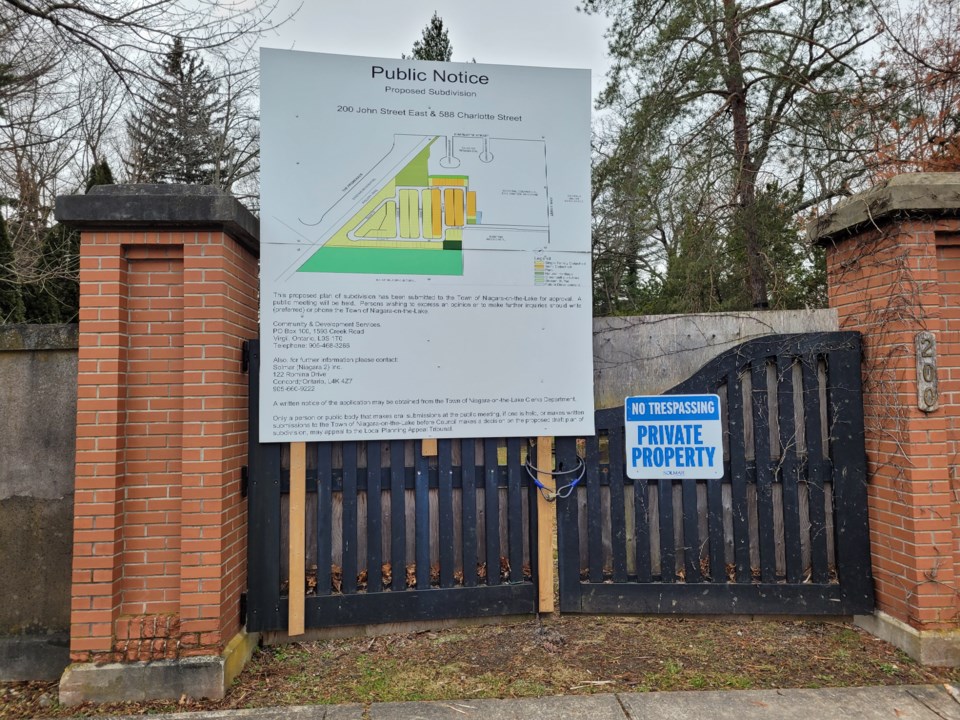The Ontario Land Tribunal is sending Solmar Development back to the drawing board with its Rand Estate proposal..
The Oct. 11 decision about a residential development on the Rand property in Niagara-on-the-Lake's Old Town dealt with appeals that followed decisions by town councillors not to allow the development to go ahead as proposed. That resulted in a lengthy OLT hearing that began last April and wrapped up in August, after being paused in May before resuming again in late July. During that time, the hearing offered evidence and testimony from dozens of experts.
With status in the proceedings were the town, Solmar, Save Our Rand Estate (SORE) residents' group, and Blair and Brenda McArthur, who live nearby at 210 John St.
The OLT's ruling “provides Solmar the opportunity to pursue substantial revisions to the design of the proposed subdivision, consisting of about 200 homes, related to the tribunal’s findings on cultural heritage, vehicular access, tree protection, and natural heritage.
The matter is not entirely closed. The summary of the appeal says tribunal will “keep this file alive” through this “interim” decision.
“It sets directions for next steps in the hope that the parties can arrive at a final design reflecting this decision and acceptable to all,” it says.
The ruling is a “complete win,” says a statement from SORE, provided to The Local by member Judy McLeod. The tribunal did “exactly what both the Town and SORE requested it to do,” by refusing to approve the application in its current form and requiring it to be adjusted.
One vital piece of the decision, according to SORE, is that the panhandle access at 200 John St., a regular topic during the hearing, was also found problematic by the tribunal due to heritage, traffic safety, mature tree and bat habitat impacts.
The tribunal held that the developer will have to find an alternative access solution. SORE members have suggested 144-176 John St. as an alternative access that could be used if the project does move ahead.
Studies related to water and wastewater as well as traffic at Queen’s Parade and John St. East have been requested by the OLT.
“This decision is also a useful reminder to our council, staff and all those who love NOTL that respecting our town's built and cultural heritage, our Official Plan and the Provincial Policy Statement should always be our collective priority,” reads SORE’s statement.
“The Town does not need to, and should never, roll over in the face of litigious, deep-pocketed developers whose modus operandi is outspending municipalities,” the statement continues.
The decision says the developer has two months to decide whether the proposal will be adjusted to meet the requirements laid out by the OLT.
Other arguments made by the OLT that SORE says are important include that the historic carriage house on the property be retained where it is currently located and accommodated by a suitable lot design.
The remaining mature trees on the site are part of the estate's cultural heritage landscape, and are to be preserved, SORE noted.
A wetland at 200 John St. cannot be relocated to the corner of John and Charlotte streets as proposed by the developer, and also must be maintained in place, the OLT said.
The tribunal also expressed serious reservations about plans to use the gates at 588 Charlotte St. as an emergency access, and noted that it was foreseeable that the emergency access would have to be co-located with the main access, using the front half of the Rand Estate.
